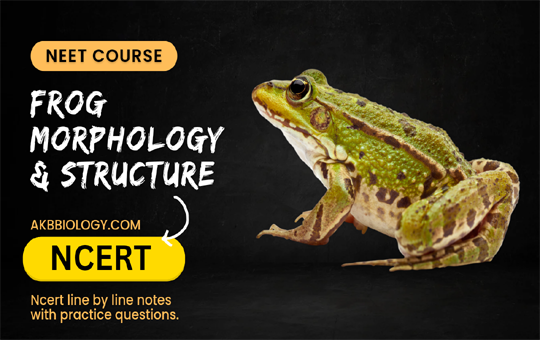Frog Morphology & Anatomy

About Course
The chapter on frog morphology and anatomy explores the fascinating structural and functional characteristics of frogs, an essential group of amphibians. Frogs are known for their unique adaptations to both aquatic and terrestrial environments, which are reflected in their morphology. The chapter provides an in-depth analysis of the external and internal features of frogs, highlighting their anatomical organization, body systems, and specialized adaptations.
Course Content
INTRODUCTION
-
00:00
-
00:00
-
00:00